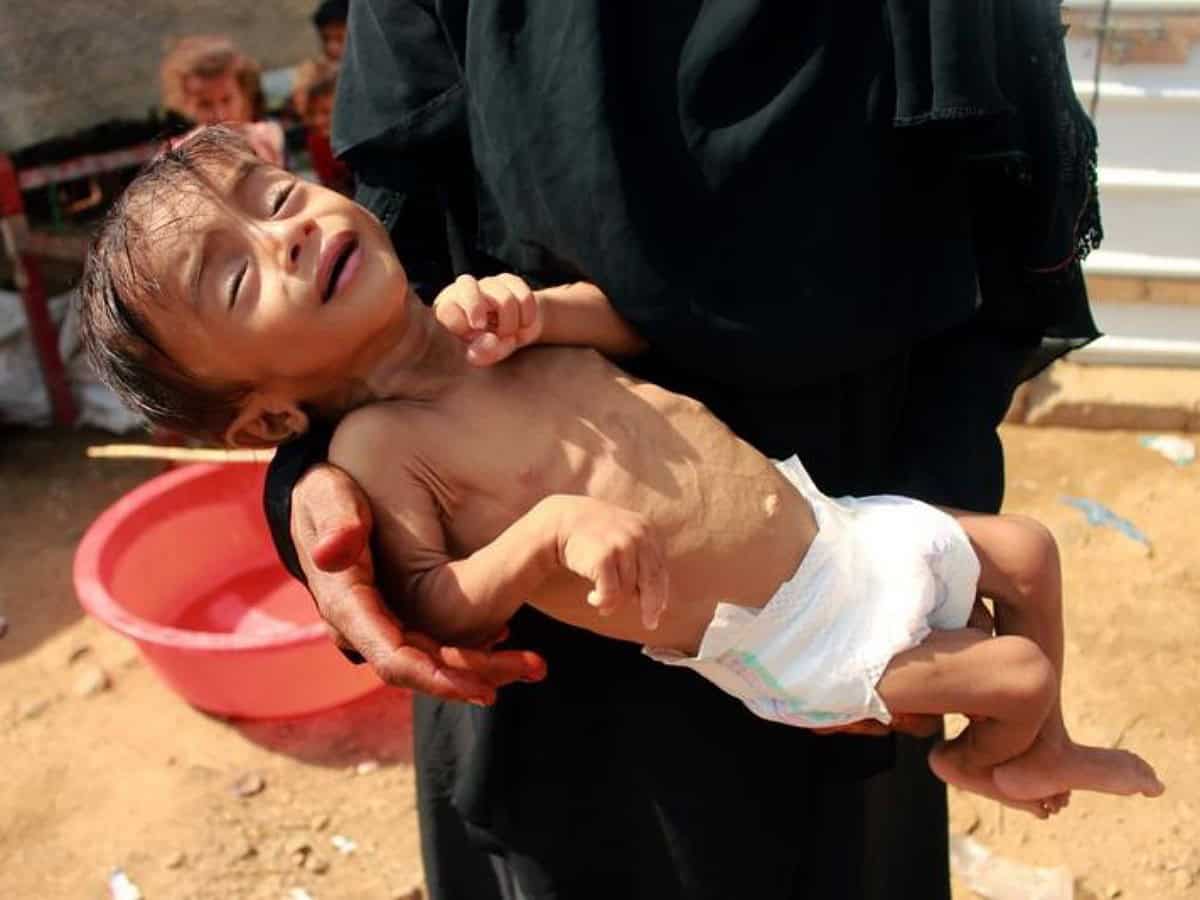
Aden: A comprehensive report released on Sunday by the United Nations (UN) unveiled a severe escalation in acute malnutrition rates among children under five in areas controlled by the internationally-recognized government of Yemen.
In the report, the UN’s Integrated Food Security Phase Classification (IPC) Technical Group in Yemen said that the situation has reached unprecedented levels of severity, particularly in the country’s West Coast region, where “extremely critical” levels of malnutrition have been documented for the first time, Xinhua news agency.
The latest IPC Acute Malnutrition Analysis reveals a stark 34 per cent increase in the number of children suffering from acute malnutrition, compared to the previous year in government-controlled areas.It indicated that this critical surge affects more than 600,000 children, with 120,000 classified as severely malnourished.
Furthermore, the analysis identified approximately 223,000 pregnant and lactating women as acutely malnourished in 2024.
Multiple compounding factors have contributed to this alarming trend, including outbreaks of diseases such as cholera and measles, pervasive food insecurity, restricted access to potable water, and ongoing economic deterioration.
“Extremely critical” acute malnutrition was reported in specific districts of Hodeidah and Taiz provinces between November 2023 and June 2024, marking the first occurrence of this most severe classification in the region.
Peter Hawkins, UNICEF representative to Yemen, emphasized the gravity of the situation, stating, “The report confirms an alarming trend of acute malnutrition for children in southern Yemen. To protect the most vulnerable women, girls and boys, an investment in and scale-up of prevention and treatment efforts are more critical than ever.”
Projections indicated a further deterioration during the lean season from July to October 2024, with all 117 districts in the surveyed government-controlled areas expected to experience “serious” levels of acute malnutrition or worse.
The Mawza district in Taiz lowlands is projected to reach the “extremely critical” level during this period, according to the IPC.Yemen’s protracted conflict and economic instability have contributed to some of the highest malnutrition rates globally.
The ongoing crisis continues to be the primary driver of the country’s dire nutritional situation.
Yemen has been embroiled in a civil conflict since 2014, when the Houthis seized control of the capital, Sanaa.
Despite diplomatic endeavours over the years, neither side has demonstrated the will to revive negotiations aimed at resolving the conflict, which, according to UN estimates, has claimed hundreds of thousands of lives.


